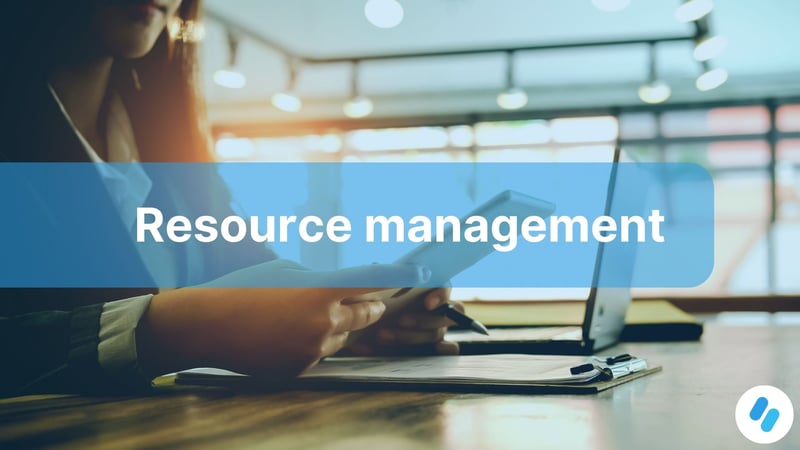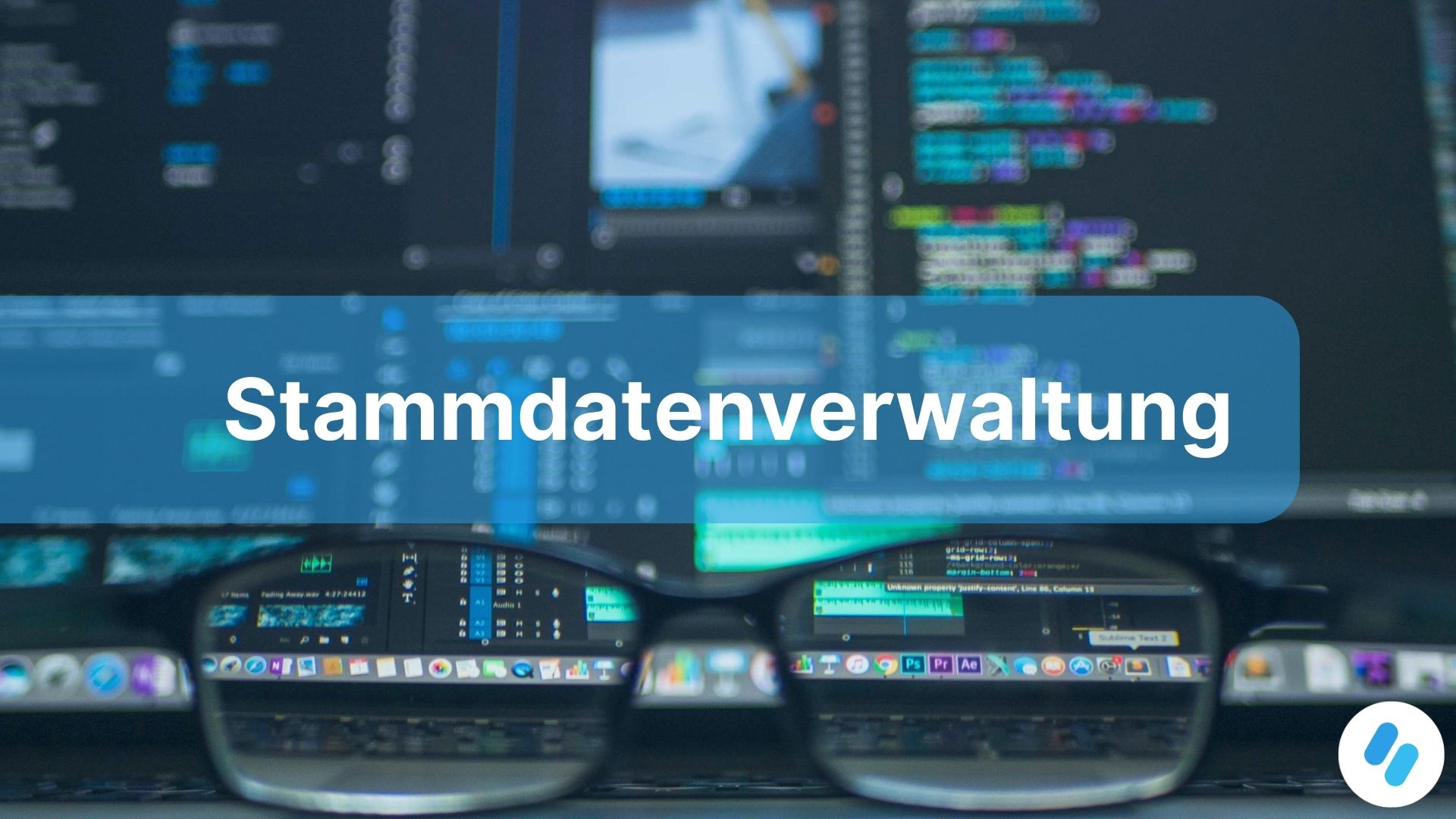Looking for a solution to the challenges of master data administration in learning management?...
Resource management with U2D Semiro: How to save time and money
Looking for efficient resource management? In this blog article, you will gain insights into the planning and administration of resources in learning management. You will also learn how you can use tools and strategies to plan capacities optimally and implement training courses or seminars successfully. You will also receive valuable tips to help you save time and money in resource management!

What does resource planning in the company involve?
Resource planning is a concept that deals with the efficient use of resources in a project or company. It refers to the systematic allocation and management of resources such as personnel, time, budget and materials in order to achieve the objectives of a project.
Resource planning covers various aspects. Firstly, it is important to identify and quantify the need for resources. This can be done through a detailed analysis of the project's tasks and requirements. The available resources must then be determined. This involves gathering information about the available personnel, time and budget. Once the requirements have been determined and the available resources recorded, the actual planning takes place.
The aim is to allocate the available resources in such a way that they can be used optimally. Priorities must be set and bottlenecks avoided. An important part of resource planning is also monitoring the progress and utilization of individual resources. This makes it possible to identify deviations or bottlenecks at an early stage and take appropriate measures. Effective resource planning makes a significant contribution to the success of a project or the company. It helps to save costs, avoid bottlenecks and organize the workflow efficiently. By carefully planning and monitoring resources, projects can be completed on time and the respective goals can be achieved.
In the field of learning management, resource management primarily involves the planning of resources for (virtual) seminars and training courses. With a learning management system (LMS) such as U2D Semiro, your company is ideally positioned. The tool can be used to plan and manage resources such as trainers, rooms and technical equipment quickly and easily.
Efficient resource management: how to save time and money
Resource management is an essential component of successful project and learning management in companies. It enables the effective planning and utilization of resources such as employee capacity, tools and teams to smoothly execute projects or training courses and save costs and time. In this blog article, we will look at the topic of efficient resource management in learning management and in particular the role of an LMS such as U2D Semiro.
U2D Semiro is a versatile tool designed specifically for corporate learning management. It provides a user-friendly platform for planning your training courses and seminars and optimizes the use of your existing resources. With U2D Semiro, you can deploy your trainers efficiently and plan capacities optimally. In addition, rooms for hybrid or face-to-face training courses can be booked with ease.
A major advantage of using U2D Semiro in the resource management process is that it enables you to better organize your seminars and training courses and identify bottlenecks at an early stage. By clearly visualizing your resource utilization, you can take timely action to avoid potential bottlenecks. This not only leads to improved efficiency in learning management, but also to greater satisfaction among your employees.

Advantages of using U2D Semiro in the resource management process
The use of U2D Semiro in the resource management process offers a variety of benefits for organizations. Resource management in the field of learning management refers to the efficient allocation and management of resources such as time, money, personnel and materials in order to optimally support the learning process. A learning management system enables companies to accurately analyze overall resource requirements and take appropriate measures to optimize them. Here are some key aspects of how resource management works in an LMS:
-
Course content and materials: An LMS enables instructors to upload and manage teaching materials such as texts, videos, presentations and interactive learning modules. Resource management includes the organization and provision of these materials according to the learning objectives and schedule of the course.
-
Time management: Effective resource management involves planning learning activities and setting timeframes for course modules, tests and assignments. The LMS can provide features such as calendars and timetables to track learning progress and ensure that learners use the time available effectively.
-
User management: The LMS enables the management of user accounts, including learner registration, course assignments and access rights. Resource management includes the efficient administration of user accounts and the assignment of roles and authorizations for course instructors or trainers, administrators and learners.
-
Feedback and assessment: An important aspect of resource management is the provision of feedback mechanisms for learners and trainers. The LMS provides features such as online tests, surveys and discussion forums to assess learning behavior and collect feedback that can be used to improve the learning process.
-
Scalability and resource allocation: When managing learning resources in large organizations or educational institutions, scalability is an important factor. The LMS should be able to allocate resources efficiently while ensuring the performance and availability of the system, regardless of the number of users and courses.
-
Integration of external resources: A modern LMS such as U2D Semiro often enables the integration of external resources and tools, e.g. for video conferencing. Resource management involves the seamless integration of these external resources to create a comprehensive learning experience.
Overall, resource management in the field of learning management aims to maximize the efficiency of the learning process by optimally using and managing the available resources. A well-designed LMS offers features that help users to achieve their learning goals and derive added value from their educational activities.
Case study 1: Optimizing time management with U2D Semiro
A key aspect of efficient resource management with U2D Semiro is optimizing the scheduling of courses, training sessions or seminars. This case study shows how the tool can help companies or institutions to plan and use their time resources in the best possible way.
Imagine you are an employee at a university. The educational institution offers a large number of courses and seminars for its students. To organize these courses efficiently, you use the learning management system U2D Semiro, because organizing the course rooms and times was a challenge that took up a lot of time and resources. Before the introduction of U2D Semiro, administrators had to manually create the timetable, assign rooms and ensure that there were no overlaps or empty times.
The implementation of U2D Semiro has significantly improved this process. One example of this is the scheduling of courses for the new semester. It used to be a tedious task to check the availability of rooms and adjust the courses accordingly. Now, administrators can simply open the U2D Semiro calendar, assign the planned course times to the corresponding rooms using drag and drop and see the availability immediately.
Thanks to the bulk booking feature, multiple courses can also be scheduled at the same time, further increasing efficiency. U2D Semiro's automatic notification function automatically informs lecturers and students of room changes or new course times, making communication and coordination much easier. By optimizing the scheduling of course rooms with U2D Semiro, the university not only saves time, but also improves the use of its resources and increases the efficiency of teaching operations.
Case study 2: Cost savings thanks to efficient resource management with U2D Semiro
In a company, it is crucial to manage resources efficiently in order to save costs. A case study that illustrates how U2D Semiro can help achieve cost savings through efficient resource management:
An innovative company provides regular training and seminars for its employees to improve their expertise and skills. One of the biggest challenges for the company was to efficiently manage the costs of external trainers, as these accounted for a significant part of the training budget.
Before the introduction of U2D Semiro, trainer cost management was time-consuming and confusing. Employees had to manually search for available trainers, negotiate contracts and manage the fee notes. This resulted in delays in paying trainers and inaccurate cost tracking.
The implementation of U2D Semiro has fundamentally improved this process. One example of this is the planning of a series of training courses on the topic of "New technologies in the work environment". Previously, employees had to manually search for available trainers and check their availability. Now, they can simply open the U2D Semiro calendar, enter the scheduled training dates and the system automatically checks the availability of the trainers. With U2D Semiro's efficient resource planning, employees can quickly and easily find available trainers and better calculate their costs, saving the company money.
In addition, U2D Semiro makes it easy to manage trainers' fee notes. Employees can manage the fees directly via the tool, resulting in faster invoicing and improved cost tracking.
 Use the U2D Semiro learning management system to plan your resources optimally.
Use the U2D Semiro learning management system to plan your resources optimally.
Tips and tricks for using U2D Semiro in everyday resource management
To exploit the full potential of resource management with U2D Semiro, there are a few tips and tricks that can help you to make your day-to-day resource management more efficient:
-
Create complete resource profiles: Make sure you create a complete profile for each resource, be it training rooms, trainers or a specific training material. Include relevant information such as availability, cost, capacity and location. This makes it easier to plan and allocate resources.
-
Use the calendar view for a comprehensive overview: Use U2D Semiro's calendar view to get a comprehensive overview of all scheduled training, resource bookings and availability. This enables you to identify bottlenecks at an early stage and act proactively.
-
Use the drag-and-drop function for quick assignments: Use U2D Semiro's drag-and-drop function to assign training courses and resources quickly and easily. By simply moving training courses to the calendar, you can easily assign rooms, trainers and other resources and optimize schedules.
-
Activate automated notifications: Activate U2D Semiro's automated notifications to be informed about changes in resource management. You will receive notifications about new bookings, changes to the schedule or conflicts so that you can react quickly and make adjustments.
-
Use analysis tools for optimization: Use U2D Semiro's analytics tools to optimize the efficiency of your resource management. Analyze past training, resource usage and booking patterns to identify trends and improve future planning. This enables you to reduce costs, avoid bottlenecks and increase the quality of training.
With these tips and tricks, you can optimally integrate U2D Semiro into your day-to-day resource management and benefit from its numerous advantages. Be proactive when planning your projects, keep track of your resources and fully utilize the potential of your trainers. This allows you to save time, reduce costs and ultimately maximize your efficiency in resource management.
Conclusion: Maximize your efficiency with U2D Semiro in resource management
Resource planning in a company covers various aspects, from identifying and quantifying resource requirements to allocating and managing available resources. Well thought-out resource management contributes significantly to the success of projects or company goals by reducing costs, avoiding bottlenecks and making workflows efficient.
In the context of learning management, resource management focuses in particular on the planning of resources for training courses and seminars. As a learning management system, U2D Semiro can help companies to optimally plan and manage their resources. With functions such as the calendar view, drag-and-drop functionality and automated notifications, U2D Semiro offers a user-friendly platform for resource planning.
Related topics


Are you looking for an efficient and flexible solution for your learning management? Then you...

Knowledge transfer has gained importance in the corporate culture. But many responsible people are...
